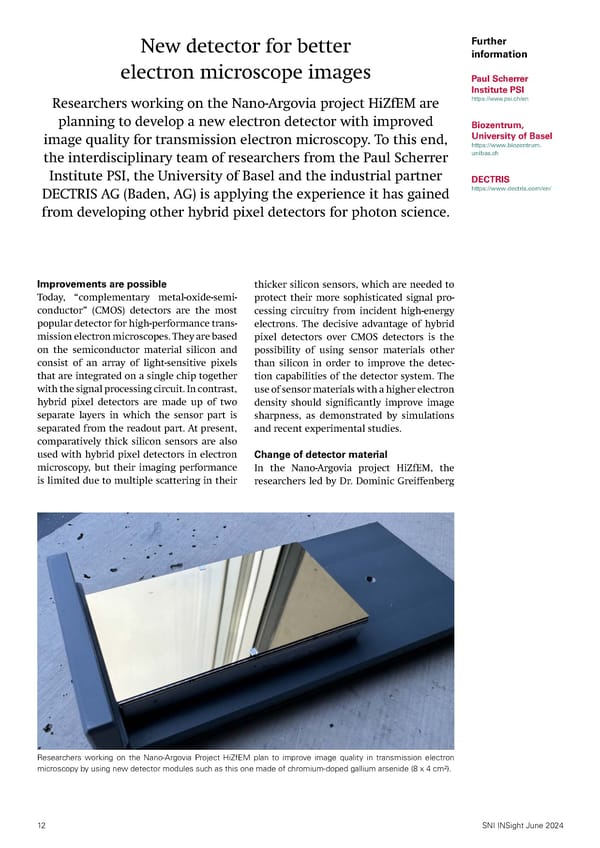New detector for better Further information electron microscope images Paul Scherrer Institute PSI Researchers working on the Nano-Argovia project HiZfEM are https://www.psi.ch/en planning to develop a new electron detector with improved Biozentrum, image quality for transmission electron microscopy. To this end, University of Basel https://www.biozentrum. the interdisciplinary team of researchers from the Paul Scherrer unibas.ch Institute PSI, the University of Basel and the industrial partner DECTRIS DECTRIS AG (Baden, AG) is applying the experience it has gained https://www.dectris.com/en/ from developing other hybrid pixel detectors for photon science. Improvements are possible thicker silicon sensors, which are needed to Today, “complementary metal-oxide-semi- protect their more sophisticated signal pro- conductor” (CMOS) detectors are the most cessing circuitry from incident high-energy popular detector for high-performance trans- electrons. The decisive advantage of hybrid mission electron microscopes. They are based pixel detectors over CMOS detectors is the on the semiconductor material silicon and possibility of using sensor materials other consist of an array of light-sensitive pixels than silicon in order to improve the detec- that are integrated on a single chip together tion capabilities of the detector system. The with the signal processing circuit. In contrast, use of sensor materials with a higher electron hybrid pixel detectors are made up of two density should signi昀椀cantly improve image separate layers in which the sensor part is sharpness, as demonstrated by simulations separated from the readout part. At present, and recent experimental studies. comparatively thick silicon sensors are also used with hybrid pixel detectors in electron Change of detector material microscopy, but their imaging performance In the Nano-Argovia project HiZfEM, the is limited due to multiple scattering in their researchers led by Dr. Dominic Grei昀昀enberg Researchers working on the Nano-Argovia Project HiZfEM plan to improve image quality in transmission electron microscopy by using new detector modules such as this one made of chromium-doped gallium arsenide (8 x 4 cm²). 12 SNI INSight June 2024
 SNI INSight June 2024 Page 11 Page 13
SNI INSight June 2024 Page 11 Page 13